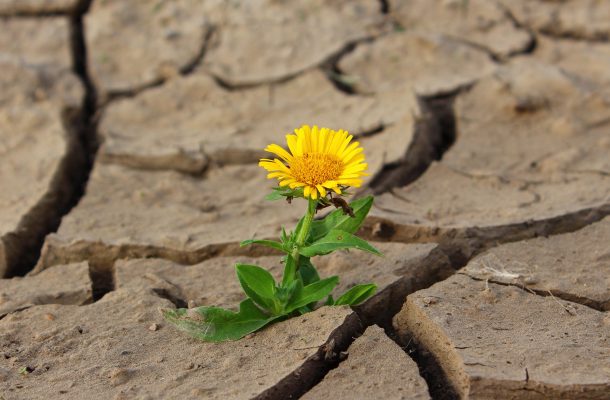It’s time to embrace carbon farming

This is a true story about saltbush lamb and carbon-neutral pigs…..and not the kind that fly.
A few weeks back the noted Australian financial journalist Robert Gottliebsen published a piece in The Australian that drew a parallel between renewable energy and farming and garnered a strong, and largely hostile, reader reaction.
The Gottliebsen story directed attention towards an alternative method for lowering our carbon emissions giving time for Australia to get its renewables act together over the next 30 years or so, without sending consumers broke in the meantime while ensuring sufficient energy for everybody’s needs.
Most importantly, he noted how hard it is becoming to attract people to the land; to get workers for the land and even to get the next generation of family to accept their inheritance of the land.
The time is therefore right for an enlightened a win-win solution that addresses problems on the land like periods of prolonged drought; increasing levels of salinity and desertification, diminishing farmland yields and falling land values.
Wendell Berry, author of The Unsettling of America: Culture and Agriculture, summed it up when he said “…a healthy farm culture can be based only upon familiarity and can grow only among people soundly established upon the land…..we now have only the sad remnants of those communities.
“If we allow another generation to pass without doing what is necessary to enhance and embolden the possibility now perishing with them, we will lose it altogether. And then we will not only invoke calamity – we will deserve it.”
Why has this been so hard to accept? I remember my first high school text book in Grade 7 at high school more than 50 years ago – “Out of the Mist” – warning us then about the dangers of destructive farming practices, soil erosion, salinity, mono-culture farming and over-fertilizing the soil.
Previously fertile landscapes of Australia have now become nothing more than a dustbowl. As recently as late November 2018 the city of Sydney was closed down by an impenetrable sand storm that blew in from the West without warning.
We are literally losing our country to bad farming practices. It’s all very well for old farmers to say: “Well that’s the way we’ve been doing it for years……” Clearly, this hasn’t worked. It is said the definition of insanity is doing the same thing over and over again and expecting a different outcome.
It is time now to implement a regenerative agriculture policy that offers a permanent, resilient cure for the core of the problem – not a temporary fix that addresses the symptoms, like a nationwide television fund raising campaign that raises money for those on the land …..until next time.
So what is regenerative agriculture? It is an approach to food and farming systems that rejects pesticides, artificial fertilisers and instead regenerates topsoil, increases biodiversity, improves water cycles, enhances ecosystem, support bio-sequestration, boosts resilience to climate fluctuation, and strengthens the health and vitality of farming communities.
It is based on applied research and thinking that integrates organic farming, permaculture, agroecology, agroforestry, restoration ecology, Keyline design and holistic management practice.
Gottliebsen’s article referred the Greening the Earth Program, a company created by the PundaZoie Company, which is incorporated in Tasmania but operates from Melbourne, and whose name in Greek means “always living.”
I must admit to a vested interest in that I have agreed to become the Executive Chairman of PundaZoie. We advocate and engage in regenerative agriculture – otherwise called carbon farming – not just for the improvement of farmland productivity, but to retain and restore the natural capital of the land and simultaneously capture carbon in the soil to halt and reverse the global effects of climate change.
Greening the Earth
Greening the Earth was founded by former Tasmanian lawyer and politician, Gabriel Haros, and is based on a comprehensive agricultural research partnership with the University of Tasmania between 2010 and 2014 which produced seven scientific papers.
This work explored the topic of Halophytes as a way to remediate drought and salinity stricken marginal and under-producing land for productive food production and to capture atmospheric carbon dioxide into the soil to create the valuable soil carbon commodity known as soil organic carbon (SOC).
Greening the Earth was highlighted by the United Nations in September 2018 in a publication on the U.N. sustainable development goal of “Life on the Land”. That publication’s chapter on ‘A Better World‘ explores the question of whether the outcomes vital for the survival of mankind are achievable in an era of global warming and answers in the affirmative if regenerative agriculture can be applied on a global scale.
The additional benefits provided by Greening the Earth address almost all of the UN’s Sustainable Development Goas (SDGs) and many of the UN’s supporting agencies and institutions have incorporated the chapter into their social media campaigns.

In the wake of the UN publication, Greening the Earth has attracted attention from the Government of Luxembourg, the European Investment Bank and the World Bank. Such institutions had previously declined overtures to consider Australia as a destination for social impact investment, such as green bonds, due to doubts about our sincerity on the issue and our affluence compared to developing nations in North Africa, the Middle East, the Indian sub-continent and Asia.
European investment houses have now signaled their willingness to support pilot programs for Greening the Earth at Scotdesco, west of Ceduna in South Australia, and in Victoria’s Latrobe Valley to test carbon capture and storage (CCS). They will fund up to three quarters of the cost of these programs through green bonds and money from private environmental investors.
This funding depends on some level of Australian State and/or Federal Government support to ensure they have ‘skin in the game’ and assurances that the outcomes and benefits derived from the programs create templates for the benefit of other more needy countries.
The prospect of widespread regenerative agriculture is securing an increasing number of visible and vocal supporters. One such advocate is the former Governor General of Australia, Major General Michael Jeffery the founder of the globally acknowledged Soils for Life Program. Others include the former Chief Scientist for Australia, Professor Robin Batterham; the former Liberal Leader Dr John Hewson and GAP’s National Standing Committee on Energy and Environment.
The time is right for the Coalition to take up the regenerative agriculture opportunity, and invite the Labor Opposition to back it in an innovative and bipartisan approach. This would demonstrate a spirit of communal goodwill at a time when the public sees both major parties as bickering, dithering and self-interested and are increasingly looking to minor party candidates at next year’s Federal election.
Carbon farming offers Australia a way to not only generate sufficient carbon credits to meet our international emissions obligations but to eventually make Australia totally carbon neutral and facilitate a seamless and affordable transition towards renewable energy.
The time has never been more apt for the Government to implement a regenerative agriculture policy to address emissions from all the non-energy sectors of the economy. These not only produce the majority of our greenhouse gas emissions but also have other serious heating and environmental effects such as increasing surface albedo and desertification.
Sequestering carbon in the soil would also take pressure off the electricity generators, allowing a transition from coal and gas over 30 years instead 10, and saving the need to scrap capital assets before the end of their economic lives.
Saltbush lamb
Oh, and the saltbush lamb…..
In October 2016, I joined then Prime Minister Malcolm Turnbull for a meal of saltbush lamb at the small Aboriginal settlement of Scotdesco at Bookabie, about 130 kilometres west of Ceduna.
The PM and colleagues including the Federal Minister for Indigenous Affairs, Senator Nigel Scullion; the Federal Minister for Human Services, Allan Tudge; the local member, Mr Rowan Ramsay; the South Australian Minister for Employment, Aboriginal Affairs and Reconciliation, Kyam Maher and a number of advisors had attended an address by the Scotdesco CEO Mr. Robert Larking and myself on the benefits of the regenerative agriculture program being conducted with PundaZoie.

This meeting offered an opportunity to explain how carbon was being captured in the soil by the Scotdesco Aboriginal Community through a carbon farming program on its own marginal, under-performing, drought afflicted and salinity stricken land. We also explained the potential to capture huge quantities of greenhouse gas emissions in the soil if such programs were extended, offering a vision for an innovative, global low-carbon economy, as well as delivering community employment and a range of additional benefits for Australia.
I told the PM this formula for long term and permanent landscape resilience also empowered the local community, increasing communal self-sufficiency and reducing their reliance on social welfare. Mr. Turnbull seemed very taken with the project, asking why he hadn’t been told about the idea before, but despite an application for funding support sent to the Department of Prime Minister and Cabinet from the Scotdesco Aboriginal Community and a number of follow up letters to the Prime Minister himself, no such help was forthcoming.
And the pigs!
China has more 500 million pigs and imports vast quantities of soybeans to feed them, mainly from the US and Brazil, although the former have now incurred a 25 per cent tariff as part of the two nation’s trade war and China has stepped up its soybean imports from Brazil.
In the longer-term, China is looking for alternative feed sources for its pigs and cattle, opening a huge new market for products which Australia could produce through carbon farming.
Australia could use the carbon offsets generated by the carbon capture effect of regenerative farming to offset emissions created by growing feedstock for pigs and the
methane from their waste to raise carbon neutral pigs!
Dr John White is Executive Chairman of the Birdon Group; Chairman of Regenerative Australian Farmers; Chairman (elect) of the PundaZoie Company and the former Chairman of Global Renewables.











